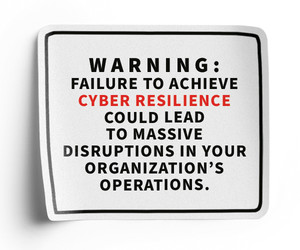Shields Ready is designed to encourage critical infrastructure organizations to shift their cyber practices from reactive to proactive to ensure recovery regardless of an incident’s severity.
“Without a robust cyber resilience strategy, cybersecurity measures can only go so far,” Darktrace Federal CEO Marcus Fowler says.
Such strategies require full IT ecosystem visibility to identify any internal and external vulnerabilities and policy gaps before a cyberattack. Strategies also need to account for the proper response technology, breaking down silos in the event that an incident investigation is necessary, and freeing up security teams from time-consuming alerts and triage.
RELATED: Network modernization begins with an infrastructure assessment.
Identifying Critical Assets and Mapping Dependencies
Shields Ready encourages agencies to audit their IT infrastructure and existing dependencies.
“Once you know the infrastructure dependencies and your assets, you can begin to understand their vulnerabilities — allowing you to assess risk,” says Steve Vetter, senior global government strategist for Cisco.
Because of the diversity of devices and bespoke protocols often used in industrial control systems, many critical infrastructure organizations struggle to maintain an accurate and up-to-date catalog of their assets.
“It is crucial that organizations have visibility into all their assets, not just those identified as critical,” Fowler says. “You cannot protect what you cannot see.”
Adversaries now widely use multistage and multidomain attacks, taking advantage of silos and the lack of visibility to move undetected between systems.
Identifying high-value assets, as the government calls them, begins with pulling all available data, but teams must be able to recognize which data matters most.
READ MORE: Develop a clear picture of your security landscape with zero trust.
“One of the greatest challenges security teams face is managing the deluge of data from their tech stack. Making sure that data is being regularly updated and filtered into a single source of truth is critical so that teams can see how all of their assets work together,” Kennedy says.
Teams should also understand the high-value assets that matter most to their business operations, thereby forming a map of assets and dependencies.
“Thinking of this like a puzzle, the data derived from every device and endpoint you have is then put together to form the full picture of your attack surface,” Kennedy says.
That attack surface constantly evolves, with more endpoints and assets added almost daily.
“A plan you created a week ago may not even be applicable now if things shift in your organization,” Kennedy says. “For your organization’s survival alone, you’ll want to regularly update your plans.”
UP NEXT: CISA’s “greenfield” solution is a model for IT modernization in the zero-trust era.
Editor's note: This article was originally published on July 10, 2024.












